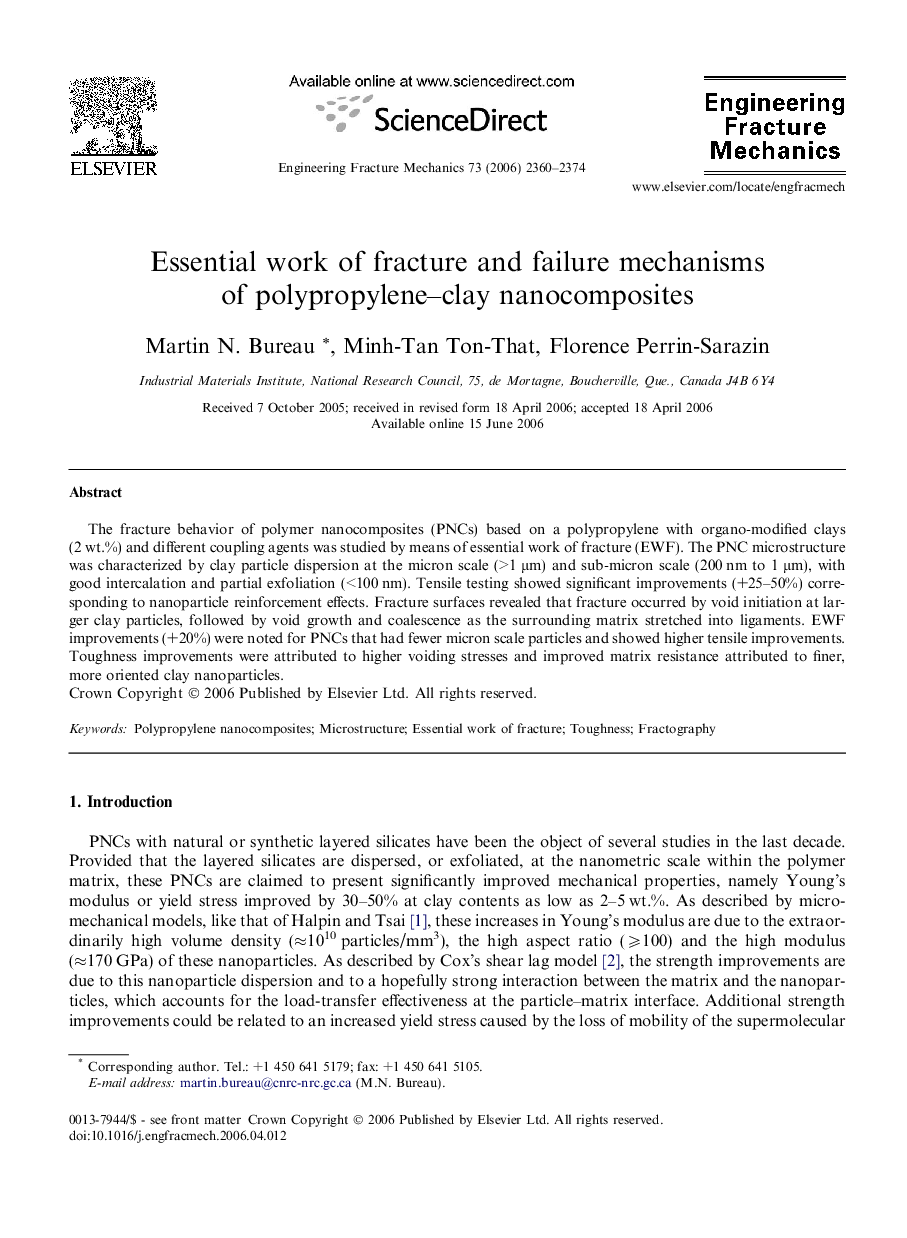| Article ID | Journal | Published Year | Pages | File Type |
|---|---|---|---|---|
| 768169 | Engineering Fracture Mechanics | 2006 | 15 Pages |
The fracture behavior of polymer nanocomposites (PNCs) based on a polypropylene with organo-modified clays (2 wt.%) and different coupling agents was studied by means of essential work of fracture (EWF). The PNC microstructure was characterized by clay particle dispersion at the micron scale (>1 μm) and sub-micron scale (200 nm to 1 μm), with good intercalation and partial exfoliation (<100 nm). Tensile testing showed significant improvements (+25–50%) corresponding to nanoparticle reinforcement effects. Fracture surfaces revealed that fracture occurred by void initiation at larger clay particles, followed by void growth and coalescence as the surrounding matrix stretched into ligaments. EWF improvements (+20%) were noted for PNCs that had fewer micron scale particles and showed higher tensile improvements. Toughness improvements were attributed to higher voiding stresses and improved matrix resistance attributed to finer, more oriented clay nanoparticles.
